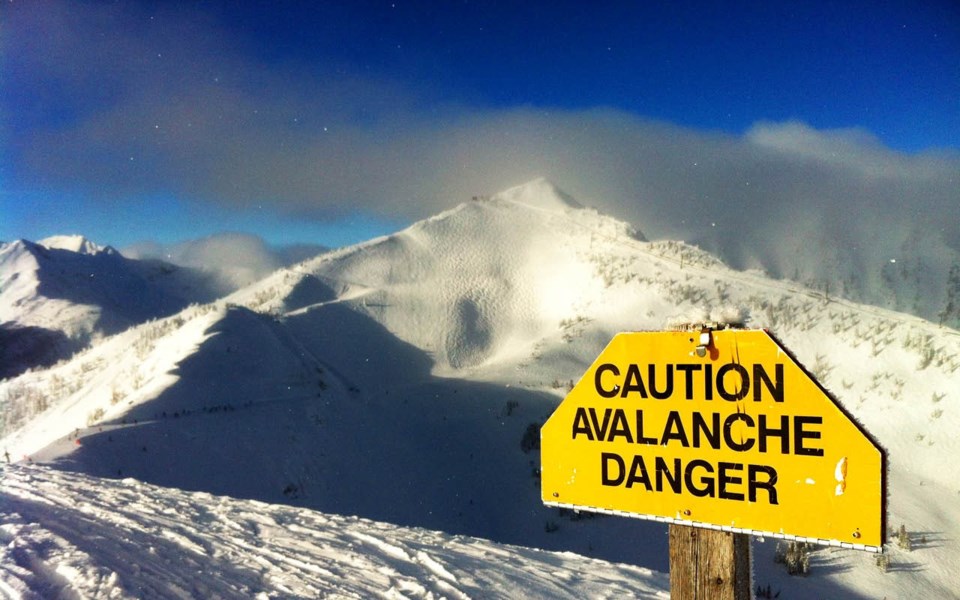Snow has killed in many ways in the West during recent weeks, as snow finally arrived in some previously parched areas, while growing ever deeper in other areas during this unusually pronounced La Niña winter.
The avalanche toll for the winter reached 18 in the United States, all in Western states and Alaska. Washington state had six avalanche deaths in 10 days. The latest victims over the weekend were a backcountry skier and two backcountry snowmobilers who were killed in separate accidents in Washington state. Two snowshoers and a snowmobiler were killed in prior days.
More unusual were the deaths on Sunday of a 50-year-old woman and her seven-year-old son at California's Kirkwood Mountain Resort. They were skiing to a slope-side condominium when snow fell from a rooftop on top of them, burying them under a metre of unusually heavy snow that set up quickly.
About 1.5 metres of snow had fallen on Tahoe-Truckee resorts in the several days prior.
"It was horrible timing," Alpine County Undersheriff Spencer Case told the Reno Gazette Journal. "They were right beneath that one piece of roof and it just unloaded. A few feet one way or another and it could have come out differently."
Rare in-bound avalanches hit two California resorts. At Mammoth, an avalanche hit eight people, causing minor injuries to six of them. Nobody was killed.
At Squaw, nobody died but there was a close call when a 370-metre wide avalanche roared down a gulch, hitting five people. Two people were injured, one seriously. But one without injuries had the closest call.
The man, who was on the first day of a three-week snowboarding trip in the Sierra Nevada with his wife, was completely buried. Only a tip of his snowboard was above the surface.
Others began digging, reaching his face and upper board under about a metre of snow, according to an account in the San Jose Mercury. He had blacked out after about 45 seconds but came to once his face was cleared of snow. His first statement was, "Where is my wife?" He had been under the snow for six minutes.
About 1.5 metres of snow had fallen on Tahoe-Truckee resorts in the several days prior.
Earlier that day, the body of a 42-year-old snowboarder was found at Squaw. His body was found in a tree well using RECCO technology, which allows searchers to track the sensors embedded in some sporting goods items.
The snowboarder was one of up to eight people who have died this winter in Western resorts from snow immersion suffocation. The snowboarder died in an inverted position, his head about a metre under the snow, according to David Clark, chief deputy corner of Placer County.
Others have died in tree wells, two of them at Montana's Whitefish Mountain Resort. One, a 56-year-old skier, died after falling into a tree well on an inbounds run near the summit. As is common with such deaths, he had become separated from his skiing companion, reported the Flathead Beacon. Another snow rider died there on New Year's Eve.
In Oregon, two people died on the same day at Mt. Bachelor. The Bend Bulletin reported that a 24-year-old snowboarder had fallen into a tree well on an expert run and was buried in two metres of snow. A friend was digging frantically to get the snow away, and then others joined in. Once they had fished him from the hole around the tree, they begin administering CPR, but it was to no avail. He was pronounced dead at the ski area's parking lot.
Two hours later, another skier went missing on the last run of the day. That victim, a 19-year-old skier, was skiing alone on an advanced run. She was reported to be an honours student at the University of Oregon.
Tree wells are hollow areas around the tree trunks shielded by branches from gathering snow. Victims typically fall in head first, their skis or snowboard holding them upside down. As they struggle to get upright or remove their skis, the snow cascades down around their heads. When blood runs to their inverted heads, they pass out and suffocation ensues.
About two-thirds of people who die from snow immersions do so in tree wells. The remainder are in open terrain.




